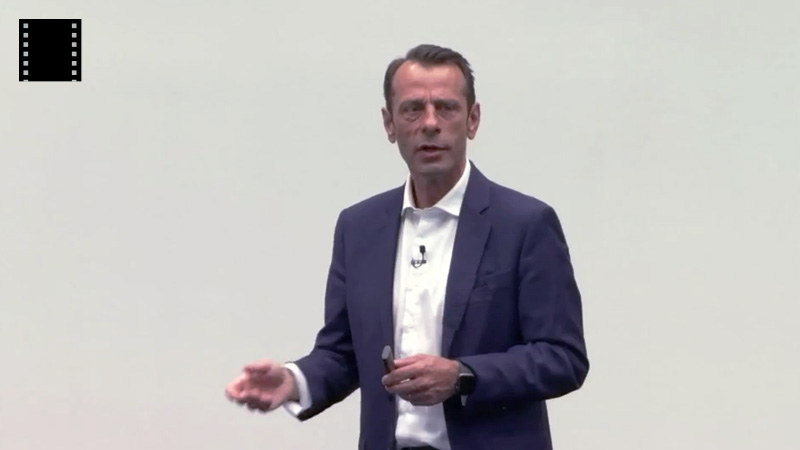Inflation protection for equities: seven criteria for selection

“Pricing power” – the magic formula in times of inflation. Which Swiss companies have it?
It is no longer just a catch-line, it has become tangible in many countries: inflation. Are Swiss equities in portfolios now facing a stress test? The good news: there are companies that can pass on rising costs to their clients more efficiently than others. This article will help you focus on inflation protection when selecting shares.
Higher prices for raw materials, increasing difficulty in finding appropriate staff and continued delays in supply chains all lead to higher production costs. And that increases pressure on margins for many companies. How to deal with it? While some companies have considerable power when it comes to pricing, others find it a lot more difficult to pass costs on to clients. Shares in companies with “Pricing Power” have the advantage here – and offer better protection with rising inflation.
Are Swiss companies impacted by inflation?
Big Swiss companies generate the lion’s share of their sales outside Switzerland. Nestlé, for example, only generates around 1.3 percent of sales at home. 1 This means:
- Many companies that are listed in Switzerland are affected more by the global situation than by inflation at home.
- In a global environment they benefit from structural factors connected with Switzerland as an economic location. Because Swiss companies can rarely use a low-price strategy on the world market; instead, they must stand out by being innovative or by being market leaders. Swiss companies, therefore, are better positioned to dictate prices.
- Read what structural factors favor Swissness in a portfolio
Exactly how much influence can a company have on pricing? Just taking a look at the sector on its own is not enough to enable an evaluation of competitiveness and pricing power. In this case, Michael E. Porter‘s industry structure model helps in making an initial evaluation.
The Vontobel Research Team has derived seven important factors for analyzing competitiveness from this model.
7 points for determining the pricing power of a company
1. Margins
What effect do high – or even expanding – margins have? Insight: companies which are highly innovative normally generate higher gross margins because their share of added value is greater.
| One example is Straumann*, a world leader in implantology and dentistry. |
2. Price wars
Which companies are able to stay out of price wars? Insight: differences between individual companies arise out of their market position and the market itself. In strongly regulated sectors such as the telecommunications industry, it is more difficult to pass on additional costs.
| An example of a company with a low risk of involvement in price wars is Partners Group*. For the Asset Manager, the bottleneck is not client demand, but opportunities to invest capital for them. Correspondingly, demand is larger than the offering and price pressure is lower. |
3. Market growth
Do innovations drive a market? If so, leading companies often benefit from strong demand and do not need to make so many compromises on the price front.
| VAT Group* is a good example. Its high-end solutions for the strongly expanding semi-conductor sector make the company a major power on pricing. |
4. Brand strength
What makes a strong brand? Insight: often a mix of various factors, e.g., high levels of innovativeness and a strategic brand leadership which gives rise to high levels of client loyalty.
| Good examples are Cartier (part of Richemont*) or various brands belonging to Nestlé*, e.g., Nespresso. |
5. Added value
Does the company offer clients added value in comparison with price? Insight: this often leads to strong client loyalty and, thus, reduced susceptibility to price wars.
| An example is Belimo*, which manufactures equipment for regulating heating, ventilation and air conditioning. This type of product generally has a very low share in the total costs of a building project, but can deliver high added value. |
6. Risk
Must a company accept higher levels of risk in order to generate the same margin as competitors? Insight: this usually reduces pricing power.
| From outside, it is scarcely possible to quantify many risks – they are often only visible at a later date, namely when they turn out to be “too high”. For that reason, we are foregoing citing a concrete example here; the margin for discretion is considerable. |
7. Power concentration
Is there a strong concentration of power within the industry? Insight: in the technology sector, the so-called “winner takes it all” effect can be regularly observed. In other words, one company tops another and is subsequently able to maintain its pricing power. Typically, these are companies with platform models or knowledge-based business models.
The low interest rate environment over the last years has led to high liquidity on the financial markets. One consequence had been high levels of activity in mergers and acquisitions (consolidations, spin-offs and take-overs). This enabled the market leaders in the technology sector to further expand their strong position. Sector concentration is often measured in terms of the HHI (Herfinddahl-Hirschman Index). It can facilitate detection of market concentrations and the strength of (price) competition.
| Temenos*, the leading provider of banking software, is one example of a company in an advantageous market position. |
1 Annual Review 2020, Page 49, retrieved 10.11.2021 at
https://www.nestle.com/sites/default/files/2021-03/2020-annual-review-de.pdf
* The companies listed in this article emphasize how the seven-point model supports analysis of industries and individual stocks. They are examples arising out of research results and are not investment ideas or recommendations.
ESG Advisory from A to Z
Looking at the big picture up closeToday, investors’ goals and the world’s need for action—the big picture—are clearer than ever. However, when you get into the details, complexity increases.
© Getty—for illustrative purposes only
Avvertenze legali
La presente pubblicazione è stata creata da Bank Vontobel AG, Zurigo (Vontobel). Il documento non è espressamente destinato ai soggetti che, a causa della loro nazionalità o luogo di residenza, non possono accedere a tali informazioni in base alla legge locale. La presente pubblicazione costituisce materiale di marketing, è fornita solo a scopo informativo e non tiene conto delle esigenze, degli obiettivi di investimento o delle circostanze finanziarie del singolo. La pubblicazione non costituisce un’offerta, una sollecitazione o una raccomandazione a utilizzare il servizio Vontobel in essa descritto, ad acquistare o vendere titoli o altri strumenti finanziari o a partecipare a una strategia di investimento. Gli investimenti in prodotti e mercati finanziari espongono a vari rischi (ad esempio rischi di mercato, di valuta o di liquidità). Prima di prendere una decisione di investimento, gli investitori dovrebbero ottenere una consulenza dal loro consulente finanziario e fiscale riguardo ai rischi associati all’investimento e alla loro situazione personale. Il contenuto, la portata e i prezzi dei servizi e dei prodotti descritti nella presente pubblicazione sono disciplinati esclusivamente dall’accordo concluso con il singolo investitore.
Le informazioni e/o i documenti presenti su questo sito rientrano nella classificazione di materiale di marketing ai sensi dell’art. 68 della LSerFi svizzera e hanno scopo puramente informativo. In merito ai summenzionati prodotti finanziari saremo lieti di fornirvi, in qualsiasi momento e gratuitamente, ulteriori documenti come la scheda informativa di base o il prospetto. I prodotti, i servizi, le informazioni e/o i documenti offerti su questo sito potrebbero non essere accessibili a persone residenti in determinati Paesi. Vi preghiamo di prestare attenzione alle restrizioni alla vendita vigenti per i relativi prodotti o servizi.
© Vontobel Holding AG 2021. Tutti i diritti riservati.



